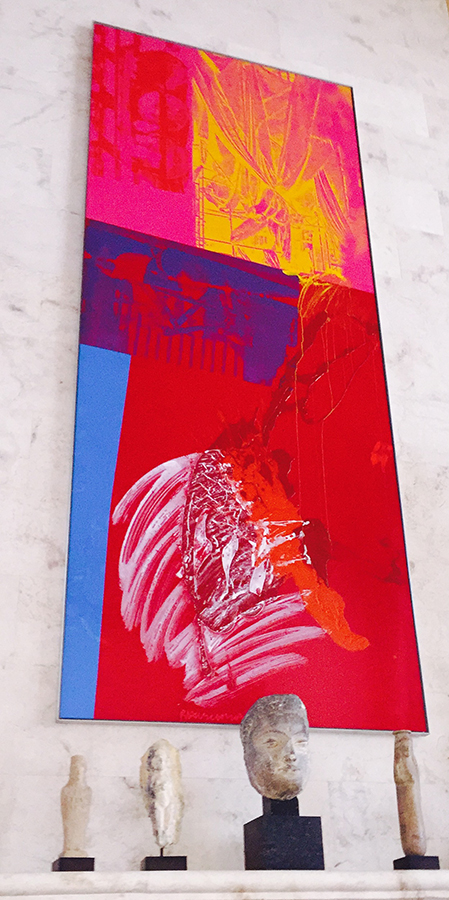
In the Leland Hirsch Private Collection
Robert Rauschenberg
Reflecks I
1990
Acrylic and enamel on aluminum
48 x 120 inches
Sculptures below the painting are unknown artists from the early 5th Century B.C, and 1st/3rd Century A.D.
Considered by many to be one of the most influential American artists due to his radical blending of materials and methods, Robert Rauschenberg was a crucial figure in the transition from Abstract Expressionism to later modern movements. One of the key Neo-Dada movement artists, his experimental approach expanded the traditional boundaries of art, opening up avenues of exploration for future artists. Although Rauschenberg was the enfant terrible of the art world in the 1950s, he was deeply respected and admired by his predecessors. Despite this admiration, he disagreed with many of their convictions and literally erased their precedent to move forward into new aesthetic territory that reiterated the earlier Dada inquiry into the definition of art.
Rauschenberg’s work of the 1950s and 1960s influenced the young artists who developed later modern movements. Andy Warhol and Roy Lichtenstein traced their inspiration for Pop art to Rauschenberg’s collages of appropriated media images, and his experiments in silkscreen printing. The foundation for Conceptual art in large measure lies in Rauschenberg’s Dada-based belief that the artist had the authority to determine the definition of art. The most fitting example is his 1961 portrait of Iris Clert, made for an exhibition at her gallery in Paris, which consisted of a telegram that stated: “This is a portrait of Iris Clert if I say so/ Robert Rauschenberg.” Additionally, happenings and later performances of the 1960s trace their lineage to Rauschenberg’s collaboration with John Cage at Black Mountain College in The Event (1952). The postmodern aesthetic of appropriation that influenced artists like Cindy Sherman and Sherrie Levine is also indebted to Rauschenberg’s penchant for borrowing imagery from popular media and fine art. His penchant for bricolage influenced the choice of many later artists, even land artists and feminist artists, to utilize non-traditional artistic mediums in their work.
